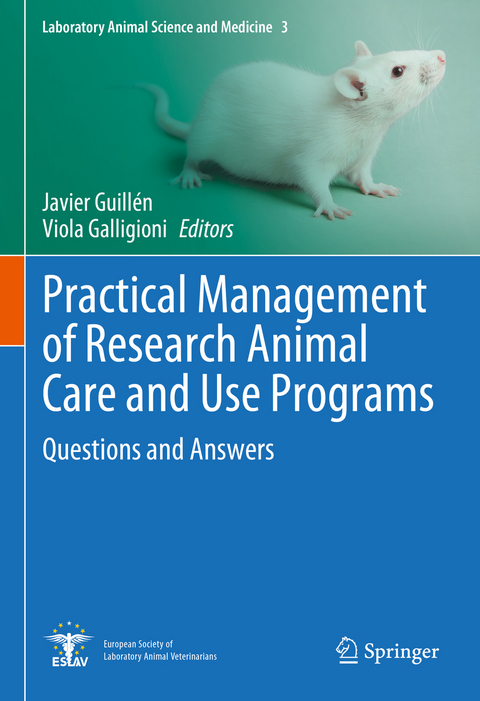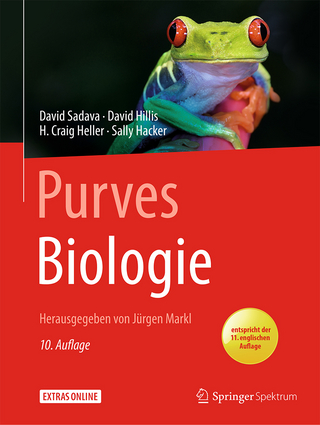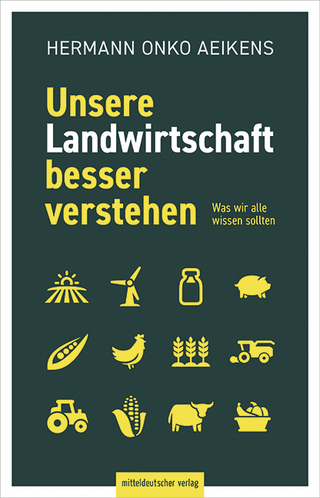
Practical Management of Research Animal Care and Use Programs
Springer International Publishing (Verlag)
978-3-031-65413-8 (ISBN)
- Noch nicht erschienen - erscheint am 28.11.2024
- Versandkostenfrei innerhalb Deutschlands
- Auch auf Rechnung
- Verfügbarkeit in der Filiale vor Ort prüfen
- Artikel merken
This book provides a complete guide to all the aspects to consider during planning, establishing and managing ethically and efficiently research animal care and use programs, taking into account all stakeholders involved in the process. Practical information on how to address the general and particular needs of all animal care and use program areas is provided. Consequently, the reader is supported with getting their project ethically and legally compliant, and implemented efficiently with organizing safe and appropriate facilities and equipment as well as hiring sufficiently trained personnel. Furthermore, strategies for impactful internal and external communication are outlined.
Responsible use of animals in research can be nothing but teamwork. The environment and professional experience of all involved stakeholders are the key for ensuring quality science, as well as animal and personnel welfare.
Research animal care and use programs represent a complex system in which animals, legislation and good practices, facility personnel and researchers interact on a daily basis. Thoughtful planning from the first step ensures animal welfare and improves the quality of in vivo experimentation. This book addresses animal program managers, veterinarians, researchers and technicians working in research animal facilities.
Chapter 18 is available open access under a Creative Commons Attribution 4.0 International License via link.springer.com.
Javier Guillén is the AAALAC International Senior Director for Europe & Latin America. He is also responsible for the AAALAC activities in Africa and the Middle East. Previously, he was for 17 years Director of the Laboratory Animal Services at the University of Navarra in Pamplona, Spain.
He is member of the Council of Management of Laboratory Animals Ltd. which publishes the journal Laboratory Animals; and of the Board of Management of the European Animal Research Association (EARA), an association that promotes openness/transparency through the establishment of national agreements. He is one of the promoters of the Spanish Transparency Agreement launched in 2016. He is former President of the Federation of European Laboratory Animal Science Associations (FELASA) and of the Spanish Association for Laboratory Animal Science (SECAL), and was also member of the Governing Board of the International Council for Laboratory Animal Science (ICLAS) during eight years. He is currently a member of the ICLAS European Regional Committee.
He has published many articles/chapters on several topics relating to the care and use of animals in research, education and testing, with special emphasis on legislation, ethics and quality, including two editions of the book "Laboratory Animals: Regulations and Recommendations for the Care and Use of Animals in Research". He participated in several Expert Working Groups by the European Commission for the implementation of European Directive 2010/63/EU.
Viola Galligioni is the Head of the Animal Facilities at the Netherlands Institute for Neuroscience, Royal Netherlands Academy of Arts and Science, the Netherlands. She has been involved in facility management in different European countries, Italy, Czech Republic, Ireland and the Netherlands. Her experience spans across a variety of species (rodents, sheep, pigs, zebrafish, Xenopus, rabbits, cephalopods and NHPs).
At the time of publication, she is President-elect of the European Society of Laboratory Animal Veterinarians (ESLAV) and Board member of the Italian Association for Laboratory Animal Sciences (AISAL). She is also AAALAC International ad hoc consultant.
She has published scientific articles and chapters on implementation of the 3Rs, animal welfare, and cephalopods. She believes in education and training of future facility managers and veterinarians, and therefore, she has been involved in the organization of multiple ESLAV-ECLAM Summer schools.
Chapter 1 The Ethical and Legal Framework.- Chapter 2 Management: Governance Finances Human Resources.- Chapter 3 Facility Planning.- Chapter 4 Animal Facility Equipment.- Chapter 5 Animal Procurement and Transport: Connecting the Dots.- Chapter 6 Husbandry.- Chapter 7 How to Enrich/Refine Lab Animal's Housing and Environment by Environmental Enrichment Programs and Training.- Chapter 8 Health Management and Monitoring.- Chapter 9 Biosecurity and Gnotobiology.- Chapter 10 Colony Management (Genetics).- Chapter 11 State-of-the-Art Surgery, Anaesthesia and Analgesia: How to Set-up Best Practices for Facility and Procedures.- Chapter 12 Practical Aspects When Humanely Killing Different Species of Animals in Research.- Chapter 13 Education, Training, and Competence in Laboratory Animal Science.- Chapter 14 The Concept of Culture of Care - Internal program communication.- Chapter 15 Biosafety.- Chapter 16 Health and Safety.- Chapter 17 Emergency and Disaster Plans.- Chapter 18 Implementing Quality Systems in the Management of the Animal Care and Use Program.- Chapter 19 Inter-Institutional Collaborations.- Chapter 20 Transparency External Communication.- Chapter 21 Analyzing Our Organization and Strategizing to Grow or Survive: A Case Scenario.
| Erscheinungsdatum | 09.11.2024 |
|---|---|
| Reihe/Serie | Laboratory Animal Science and Medicine |
| Zusatzinfo | XII, 424 p. 48 illus., 47 illus. in color. |
| Verlagsort | Cham |
| Sprache | englisch |
| Maße | 178 x 254 mm |
| Themenwelt | Medizin / Pharmazie |
| Naturwissenschaften ► Biologie | |
| Veterinärmedizin | |
| Schlagworte | Animal ethics • Animal Research Facility Management • Animal Use Program • Experimental Animal • Laboratory Animal Care • rodent health |
| ISBN-10 | 3-031-65413-7 / 3031654137 |
| ISBN-13 | 978-3-031-65413-8 / 9783031654138 |
| Zustand | Neuware |
| Haben Sie eine Frage zum Produkt? |
aus dem Bereich


